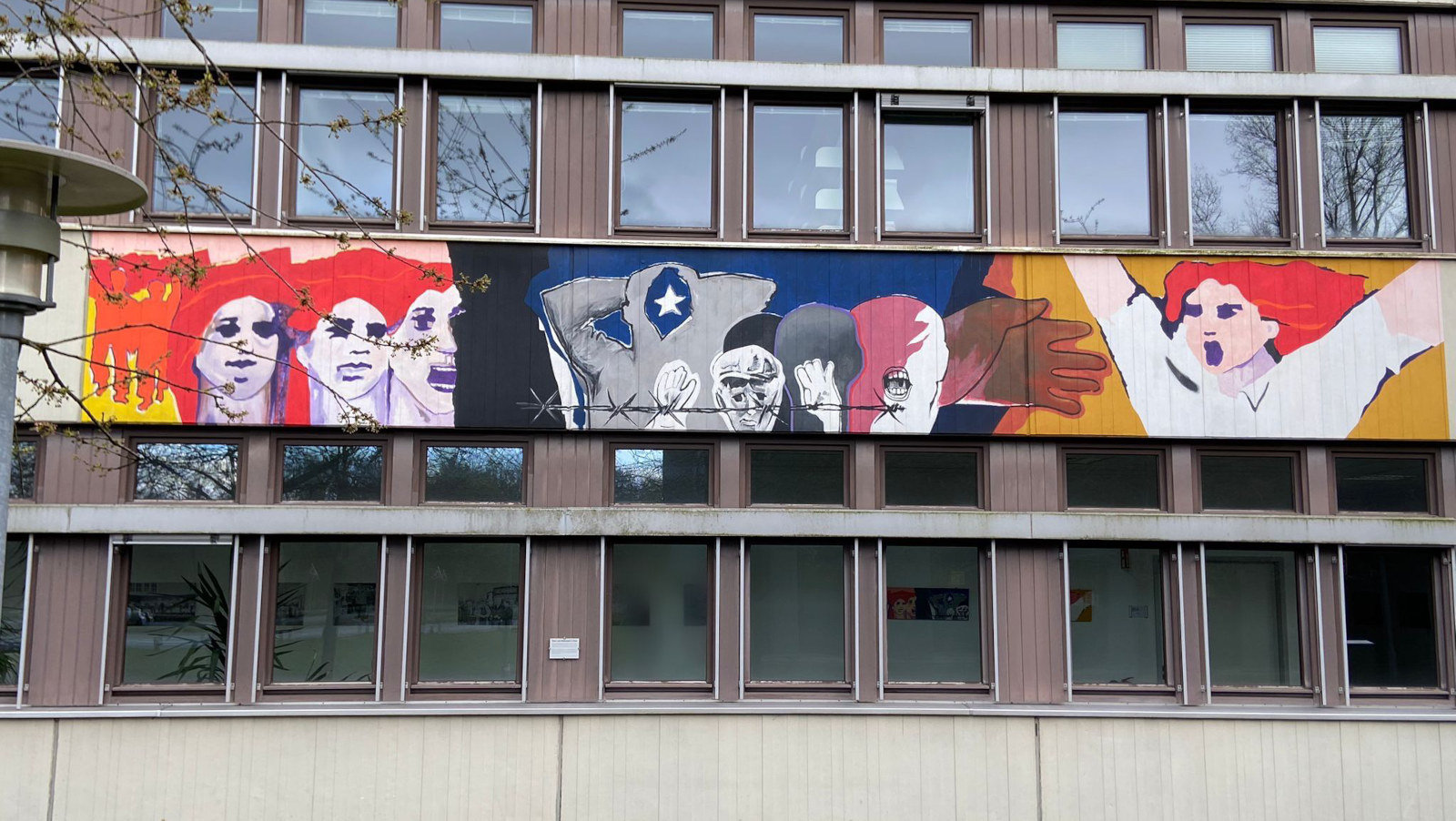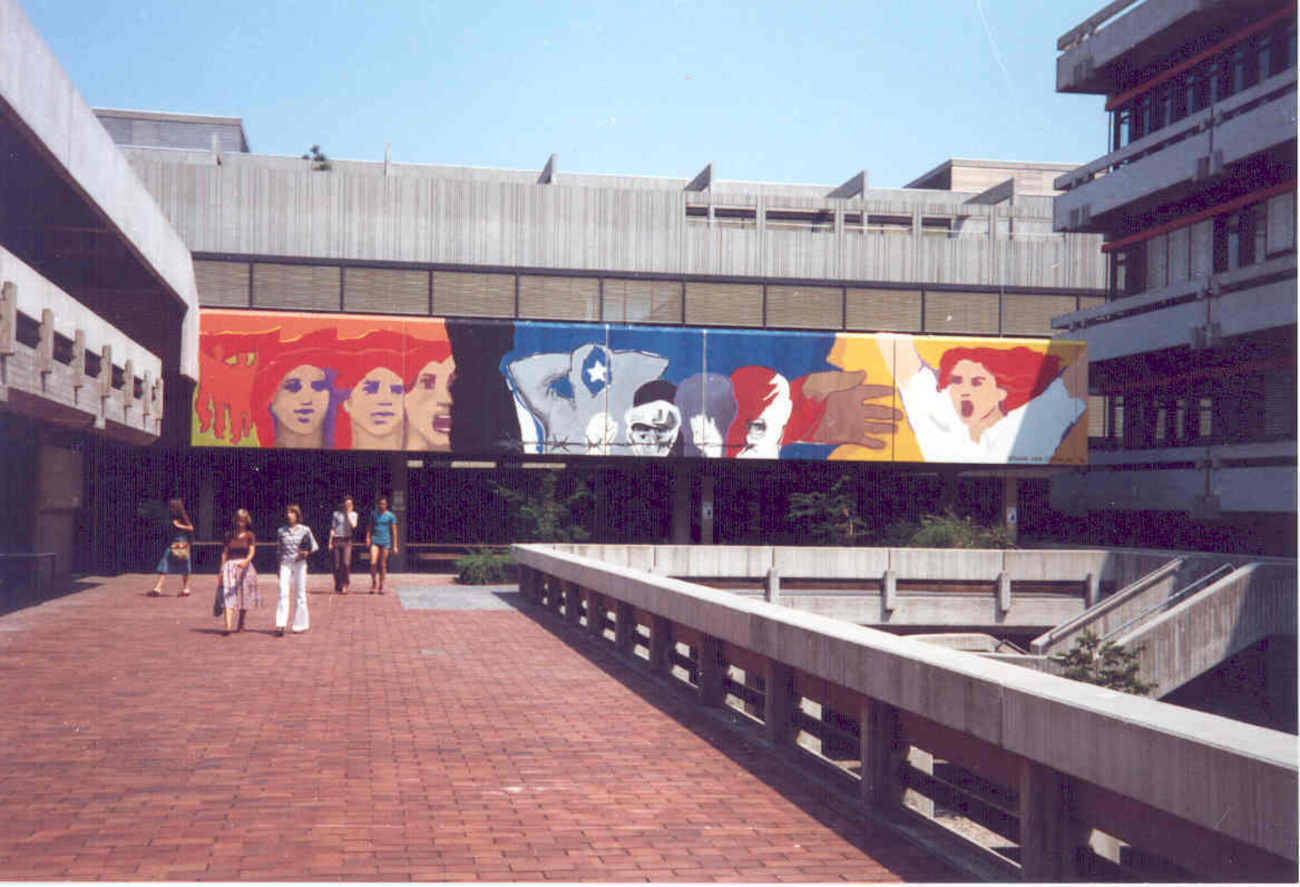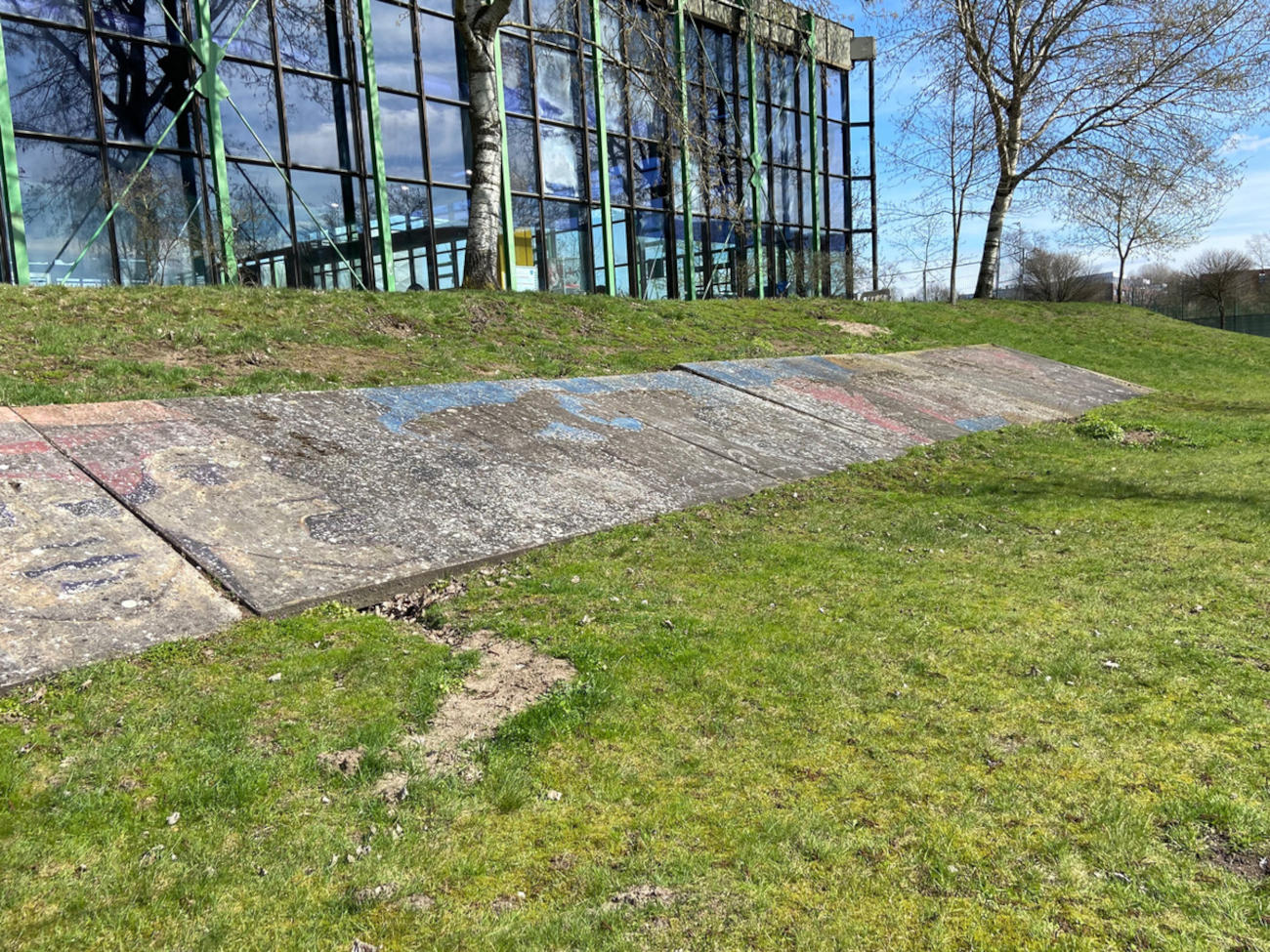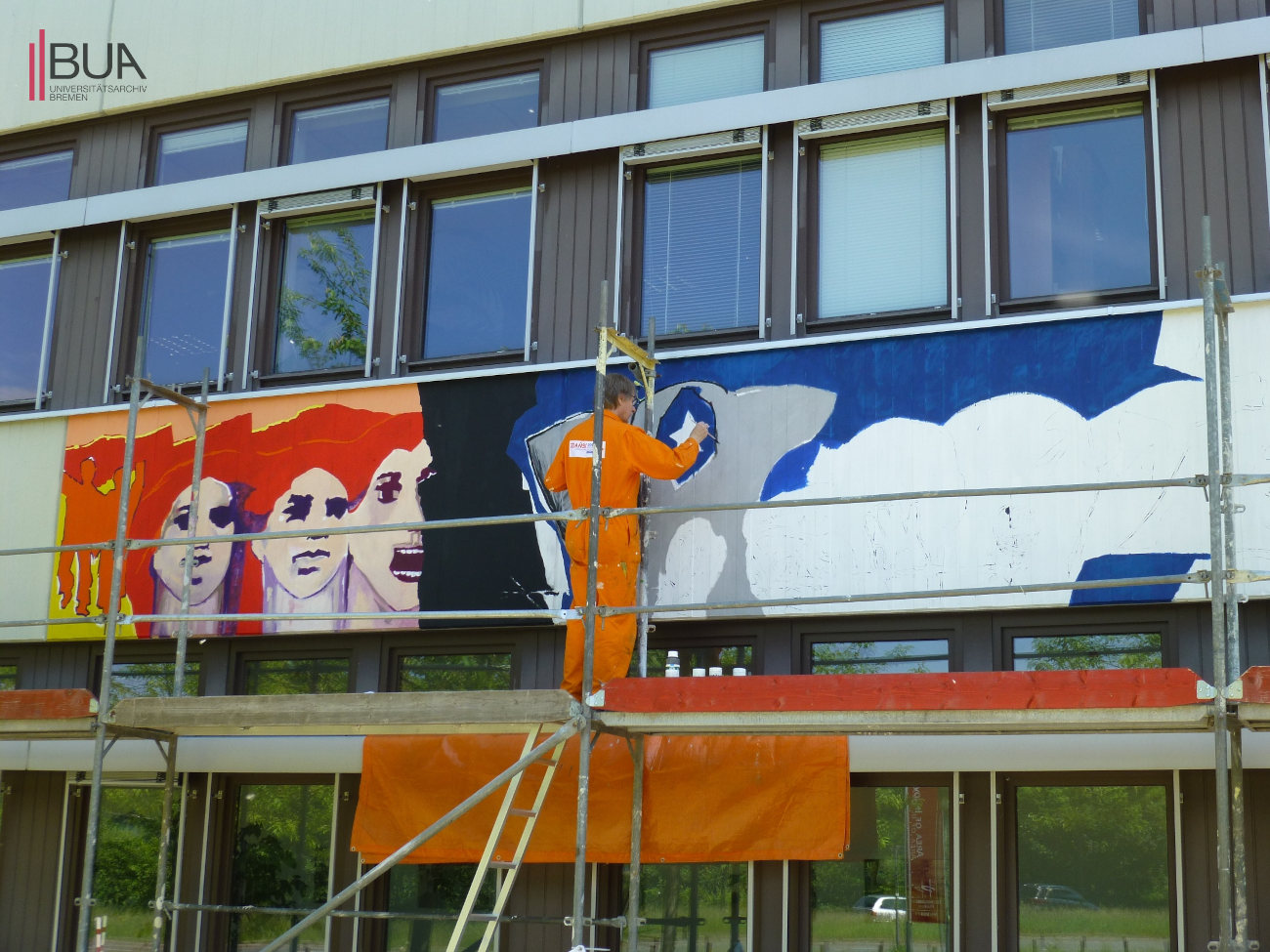
© Hannah Bruns
Have You Heard of ... The Mural Entitled “Terror and Resistance in Chile”?
The university campus has much to offer – including art! Have you ever taken a closer look at all these artworks? One of them is actually on campus twice.
On a small embankment between the university pool and the SFG Building lie large painted concrete slabs. The colors on the 21 x 3 meter large slabs have badly faded, and the motif is hardly recognizable. What does the artwork depict? Why is it there? And what is its significance for the university? If you take a close look, you may recognize the work from another location on campus. On the wall of GW1 Building is a reconstruction of the mural. How did it come about?
The Military Coup in Chile
This history begins in Chile: In the wake of the military putsch against the socialist government in 1973, members of the Chilean opposition and its sympathizers were systematically arrested, tortured, and very often murdered. Bremen was quick to announce its solidarity with the victims of the military junta, and several exiled Chilean scholars found refuge at the University of Bremen at the time. In June 1976 during the Chile Solidarity Week, art students of the university together with Gracia Barrios, José Garcia, José Martinez, Guillermo Nuñez, and José Balmes – an exiled group of Chilean artists living in France at the time, calling themselves “Brigade Luis Corvalán” – created the mural. This was the first of the group’s work publicly exhibited in Germany. The slabs lying in front of the University Pool are what remain of the mural today. Known as “Chilean Muralismo,” the Latin American art movement of mural painting was seen as a political tool and manifesto, used especially in election campaigns.

© Marlis Glaser, ca. 1976
Memorial Against Fascism
The sequence of paintings depicts the Chilean people’s fateful precipitation from democracy to fascism. Oppression and terror were the result: The picture of a Jewish boy in the Warsaw Ghetto recalls the evils of German fascism. At the same time, the three people and the white star on a blue background refer to the concentration camps in Chile. The motif of the third passage illustrates the opposition’s call to resistance: A pleading hand stretches out to a rallying female figure. This points to the active role of women in the Chilean resistance. The mural is the first political work in public space at the university. Today, it is a testimony to the political events and debates of the 1970s as well as being a symbol for the feeling of support and solidarity with Chilean exiles shared not only by the University of Bremen but also by a large part of Bremen polity and civil society.

© Universität Bremen
A Piece of University History Survives
Until 1997, the mural hung on the roofing of the University Boulevard in front of the State and University Library Bremen. In the course of reconstruction of the Boulevard, the roofing was demolished, the slabs were removed, and deposited between the University Pool and the SFG Building. Since then, the mural has been exposed to the weather and is hardly recognizable today. The University Archive, in cooperation with the cultural authority and with the support of the “Wohnliche Stadt” foundation, tried to find a way to restore the original mural and install it in a more protected location on campus.

© Universitätsarchiv Bremen, Mai 2014
Although this project could not be realized, eventually, the mural was reconstructed out of respect for the work of the artists and in memory of the historical-political context of its creation. In early summer 2014, Bremen artist Jub Mönster transferred the mural to the concrete frieze on the GW1 Building, Block A, on a scale of 1:2. So now, almost 50 years after the military coup, it can still be admired on campus.
Further Information
The University Archive provides an insight into the history of this and other works of art on its website (in German only).